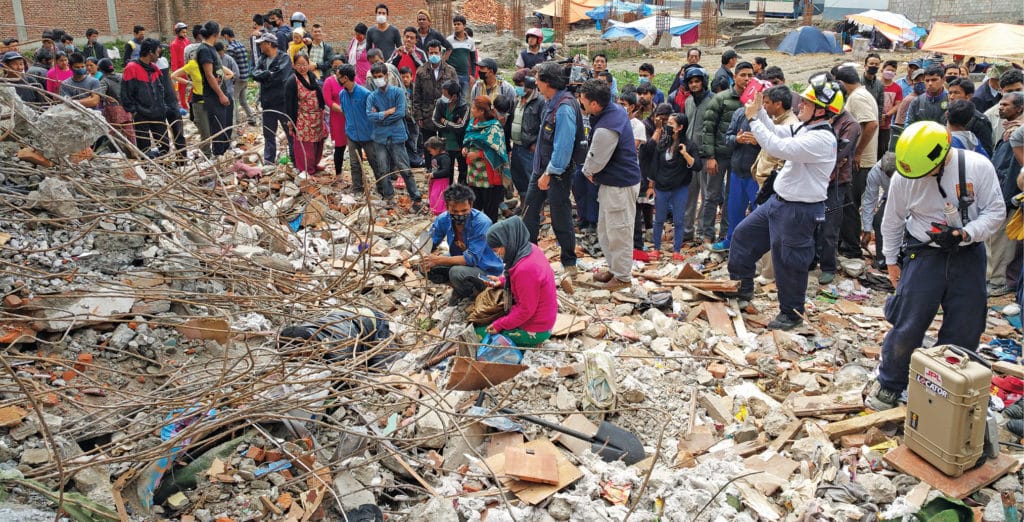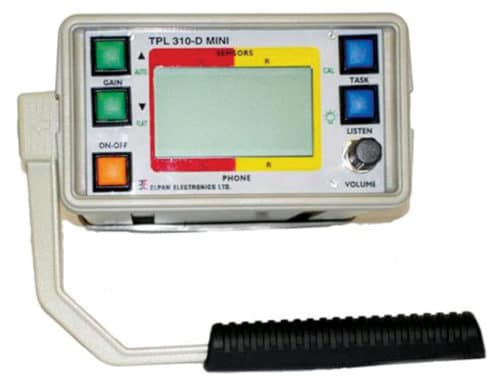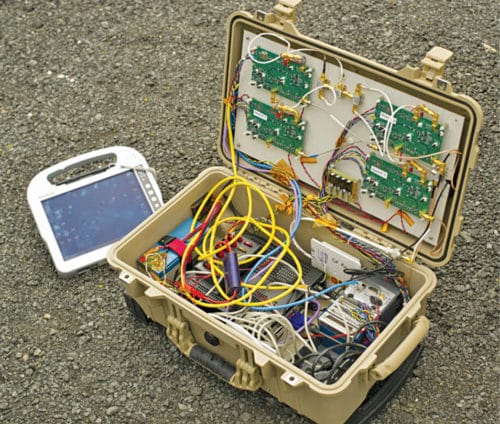Possibilities of human fatalities in such situations as earthquakes, floods and collapse of infrastructure, among others, has inspired many recent technological advancements in the expanding field of human safety.

Frequent natural calamities such as avalanches, landslides, earthquakes, volcanic eruptions and floods, along with the menace of low-quality materials in infrastructure development are always leading to untimely collapse of flyovers, bridges, roads and buildings, resulting in causalities. Similarly, there are numerous reasons for drowning also, like excessive rainfall, unwarranted release of water from dams, accidents in water bodies or, more concerningly, suicide attempts.
In all these mentioned reasons, life of people is always under threat. Although, search and rescue operations/missions are immediately set out to find the victims trapped underneath the wreckage, during these missions, time is critical, and the ability to quickly detect living victims greatly increases the chances of their rescue and survival.
Society, relatives and the administration will no doubt whole-heartedly try to save people’s lives in such situations. Recovery of buried and underwater drowned human bodies is one of the major missions of rescuers. Men and machines work together to rescue such people at the earliest. However, due to shortage of manpower, lack of training and professional equipment, body-recovery missions become difficult. Resources or techniques available to find people under heaps of debris or in a huge water body are generally not smart or capable enough to locate people in the shortest time possible.
The possibility of human fatalities has inspired many recent technological advancements in the expanding field of human safety. In an industry that has long relied on trained dogs and/or human trainers/lifeguards, products like electronic surveillance and sensing/detection in every imaginable form are making their debut on the market, all with the unifying goal of rescuing the victims at the earliest.
Electronic sensing devices are being advocated strongly to be more reliable, effective, cheap and user-friendly to locate people buried under rubble and vast water bodies. Such devices lead the rescue team quickly and efficiently to the victim, saving precious minutes of fruitless search. Innumerable technologies available today have enhanced the safety to the full range of senses. These include a surveillance system that never blinks and sensors that can hear a cry for help, which is never uttered to 3D imaging that quite literally transcends both time and space. Here are some upcoming electronic sensing techniques to locate buried and drowning people.

Trapped person locator (TPL)
TPL is an extremely efficient and sensitive rescue tool that uses leading edge technology. It is used for technical rescue operations using seismic technology to listen for signs of life. The device detects the presence of buried victims under rubble and identifies their exact location using wireless and/or wired ultra-sensitive seismic sensors.
Further, search allows two-way communication using its waterproof communication probe up to two metres with the victims once they are found. The detector is equipped with both seismic and acoustic sensors, which discriminate between environmental and relevant sounds. Wired and/or wireless seismic sensors can detect sounds of scratching, knocking, cries and other nearly-inaudible sounds made by trapped victims as they struggle to be rescued.
The system has adjustable noise reduction filters to eliminate unwanted low/high noises from pneumatic drills, vehicles, wind, electric power cables and so on. The communication probe’s microphone and speaker help communicate with buried survivors. The detector is lightweight, durable and portable, and comes with a compact control box. Its interface allows detection of victims’ location faster. The system has been used in the successful location and rescue of victims all over the world, and heralds a new era in the field of emergency equipment and rescue preparedness.
Electronic sensing of buried people
There are various scientific methods that can help locate buried victims. One of the most important methods is to identify and locate variations in the surface such as depressions or small hills, which might indicate that a body is buried underneath. A new device, however, uses a probe—slightly thicker than a human hair—to probe the soil, detecting ninhydrin-reactive-nitrogen (NRN) in its vapour phase that collects in air pockets around grave soil.
The probe consists of an alumina-coated, porous layer, open tubular column, with a motorised pipette to pull in air samples from the soil at ambient temperatures. To probe the soil under a concrete slab (for NRN sampling), a small hole (about 3mm) is drilled in the slab. At present only probing hardware is portable, but engineers are working on making the processing end portable too, so that the whole system can be used in the field.
Scientists have developed small and extremely sensitive gas sensors for acetone, ammonia and isoprene—all metabolic products that are emitted in low concentrations via human breath or skin. They have even combined NRN sensors in a device with two additional sensors for carbon-dioxide and moisture. This is important as individual substances could come from sources other than human. However, a combination of sensors provides scientists with reliable indicators of the presence of people.
FINDER (finding individuals for disaster and emergency response)
Microwave radar technology is sensitive enough to identify the unique characteristics of human breathing pattern and heartbeat from that of other living creatures. NASA has developed a microwave-based radar technology named FINDER to detect a human heartbeat buried beneath 9.14m (30-feet) of crushed material or hidden behind 6.09m (20-feet) of solid concrete, and from a distance of 30.5m (100-feet) in open space.
Several prototypes of FINDER have been tested and developed. Testing has proved successful in locating people buried in nine metres of mixed concrete, rebar and gravel rubble from a distance of over nine metres. The debris sometimes causes the radar signals to bounce back irregularly, making it difficult to interpret the signals accurately.
Another difficult task is to isolate the relatively weak signals of a heartbeat from noisy signals. However, this problem has been tackled to some extent by using advanced data processing systems to pick up faint signals. The advantage of this technology is to allow first responders to quickly detect if a living human is present in the debris and whether he/she is conscious, which can help rescuers decide the most efficient course of action.
Test results with the old version of FINDER have resulted in design changes that are being incorporated into the new version. The mechanical and electronic design of the device has evolved towards a lightweight sensing device that features a revised user interface to integrate an antenna, radar electronics, digital processing and increased battery life.

Ranging buried cable intrusion detection sensor
This is a covert outdoor perimeter intrusion detection sensor. Buried sensor cables generate an invisible detection field that the system monitors to detect and locate intrusions. Being invisible, it offers the lowest vulnerability to the defeats of any outdoor perimeter intrusion detection sensor while ensuring site aesthetics.
The system uses ported coaxial sensor cables to create an invisible electromagnetic detection field. Equipment within the cables make it possible to transmit energy from the transmitting cable for detection by the corresponding parallel receiving cable. The exact intrusion location (including those occurring simultaneously) can be determined using a coded pulse signal algorithm.
Detection and location of hidden or buried casualties is a difficult task. The need to detect casualties in situations such as collapsed buildings, dense undergrowth and thick smoke is becoming more common and, consequently, there is a need for specialised equipment to deal with associated problems. Devices that register vibrations or sounds that would otherwise go undetected have been found to be the most effective for the location of buried casualties.
Better models of this type of equipment have filtering systems to reduce background noise, making it easier to detect sounds made by trapped casualties. Features and benefits of such a device are:
- Covertly detects and locates perimeter intrusions at a distance of up to 800m per processor
- Pinpoints intrusions up to one metre
- Completely covert; site aesthetics remain unchanged
- Operations not affected by vegetation (including grass, shrubs and trees)
- Insensitive to wind, rain, snow, hail, fog, sandstorms, seismic vibrations, acoustics, magnetic effects and blowing debris
- Flexible, software-based zoning
- Communication path redundancy ensures continued perimeter protection in case of a cable cut
- Power and data over sensor cables simplify infrastructure requirements
Drowning detection
Only a limited amount of diving activities can be conducted to search for drowned bodies. A more efficient way to conduct this kind of body recovery activity is to detect the resting frequencies of human body parts—a human body (of height about 180cm) has a frequency of around 3Hz from the side, and from the top (head 25cm) the frequency is around 6Hz. It is necessary to incorporate state-of-the-art underwater acoustics techniques, such as scanning sonar, into operation procedures.
The purpose of the present research is to investigate the application of scanning sonar for underwater human body detection and recovery. Technically, a microphone that can detect very deep frequencies and a ping for everybody (multiple ping frequencies for multiple body parts) is needed. A human body can reflect all distinctive frequencies because each body part has its own frequency, depending on its position. So, it is important to calculate a frequency profile of all body parts to express the characteristic polynomial.
A sonar surveillance system can detect drowning humans but only in small indoor places (like swimming pools) and not in open water. If a body is lying on the seabed, a very high frequency (>800kHz) sector scan sonar will work, but with very short ranges (10 to 50 metres, typically), other types of sonar should give a clear image of the legs, arms and body.
Real cases where this technology was incorporated for rescue work has illustrated that the movement of a diver, several suspected targets and morphological features around the targets can be recognised by the scanning sonar. In addition, dimensions, shapes, amount and geographic locations of the targets can be identified for further consideration.
It has been proved indirectly that a scanning sonar can detect drowned human bodies successfully. The detection and identification ability of the scanning sonar can be dramatically improved if optical apparatus such as remotely-operated vehicles (ROVs) or towed-operated vehicles (TOVs) are incorporated into operation procedures.
Conclusion
Electronic devices currently being used to search for drowning people or those buried under debris work with microphones and cameras. These can only help locate entrapped people who are capable of making sounds or are visible beneath ruins. In the future, scientists want to complement these resources with advanced electronic-cum-chemical sensors to detect buried and drowning human beings so that they can be rescued alive. In this regard, drones and robots equipped with electronic-cum-gas sensors can also be used, allowing difficult-to-reach or inaccessible areas also to be searched.
Dr S.S. Verma is professor at Department of Physics, Sant Longowal Institute of Engineering and Technology, Sangrur, Punjab.











hello sir,
how can we implement these idaes in drone likes FINDER and want to ask more on this related topic.
Here is the reply from author Dr. S.S.Verma:
“Here, I would like to point out that the article deals with the use of electronic methods with their use very near to the surface of land or by inserting the probes into land and water to sense electronic based activities related to the buried or drowned people in order to sense their presence at the earliest to save them. Whereas use of drone like devices (i.e., Finder) from distances can help only to locate things at the surface of land or water and the drone sampling is not possible beneath land or under water. However, future drone technology may be developed for such requirements with more powerful signals (EM waves etc.) and sensors probing inside the land and under water.”